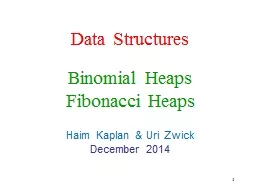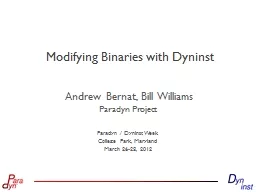PPT-Data Structures Haim Kaplan & Uri Zwick
Author : liane-varnes | Published Date : 2019-03-19
December 2014 Binomial Heaps Fibonacci Heaps 1 Fibonacci Heaps Lazy Binomial Heaps Binomial Heaps Binary Heaps O1 O1 Olog n Olog n Insert O1 O1 O1 O1 Findmin
Presentation Embed Code
Download Presentation
Download Presentation The PPT/PDF document "Data Structures Haim Kaplan & Uri Zw..." is the property of its rightful owner. Permission is granted to download and print the materials on this website for personal, non-commercial use only, and to display it on your personal computer provided you do not modify the materials and that you retain all copyright notices contained in the materials. By downloading content from our website, you accept the terms of this agreement.
Data Structures Haim Kaplan & Uri Zwick: Transcript
Download Rules Of Document
"Data Structures Haim Kaplan & Uri Zwick"The content belongs to its owner. You may download and print it for personal use, without modification, and keep all copyright notices. By downloading, you agree to these terms.
Related Documents













![[READ] - Kaplan NAPLEX Review 2013-2014: The Complete Guide to Licensing Exam Certification](https://thumbs.docslides.com/907003/read-kaplan-naplex-review-2013-2014-the-complete-guide-to-licensing-exam-certification-for-pharmacists-kaplan-medical-naplex.jpg)
